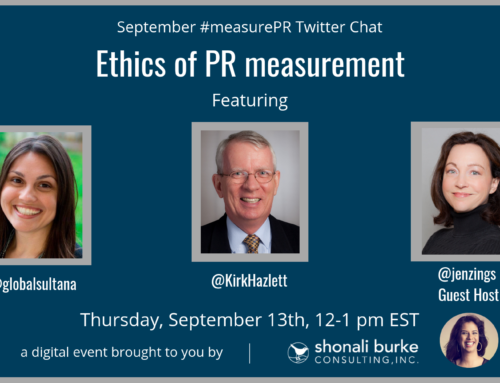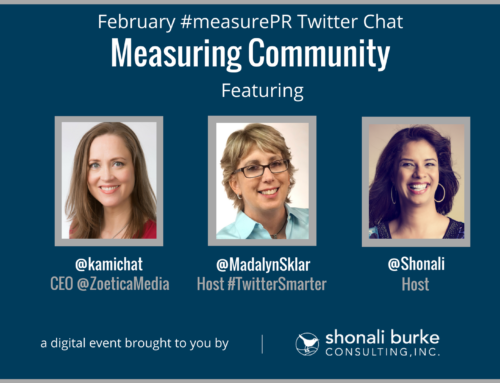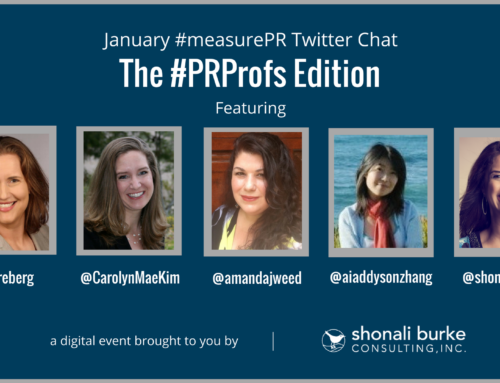 Guest Post by David Klein
Guest Post by David Klein
More than ever, clients demand that PR agencies prove their value. Whether it’s the CEO or marketing manager, someone is going to ask about the ROI of your campaigns and other efforts. Successful agencies have become very good at telling their stories and quantifying the impact of their work.
PR lives in a near-ubiquitous digital landscape where every impression, click, and interaction can be measured.
But what about the PR agency itself? What can or should be measured about how the firm delivers its services? Agency operations ”” the internal processes, science, and economics of management ”” is not the part of the business that lands major press coverage or a shout out at the annual meeting. It’s often overlooked. It’s not sexy.
But in order to grow, exit, or even stay in business, it’s critical that agencies measure and improve their operational performance with these metrics that matter:
1. Employee Capacity
When planning for the upcoming month, do your employees have availability to take on additional work? (Don’t forget about vacation time, by the way.) Understanding real-time employee capacity allows you to determine whether or not your team is able to take on new clients, appropriately serve current accounts, and determine future hiring decisions for the agency. Conversely, having too much capacity is a strong signal that a major change is needed, whether it’s increased spending on marketing and sales, reducing headcount, or making a strategic shift in the types of services you provide or how they are priced.
2. Revenue Per Employee
How many dollars, on average, is each employee bringing into the business each year? According to the 2016 Global Communications Report, which ranks the world’s top 250 PR agencies, the average annual review per employee in 2015 was $151,000. That’s roughly $12,500 in revenue a month for each employee. Granted, even at the level of global elite (that sounds more ominous than it was meant to be), average revenue per employee ranges wildly from under $90,000 to over $200,000 a year.
The first step to increasing revenue per employee is to measure revenue per employee. This can be done by simply dividing annual revenue by the number of employees on your team. Once you know where you stand, you can begin to track your performance against internal company goals, as well as the industry’s most successful agencies.
3. Total Operating Expenses
Including rent, utilities, payroll, marketing, insurance, etc., how much does it cost to run your business? According to agency M&A expert Rick Gould, agency total labor costs should be no more than 55% of revenue and overhead no more than 25%. This leaves 20% profit for the business, part of which can be used to reward key employees and executives, should you choose to do so.
Across the business, there may be opportunities to reduce operating expenses. This can be as simple as work from home policies that reduce the need to rent larger office space or as complicated as rounding out teams with junior (and less costly) staff members. Regardless of whether you elect to bring on new team members, with the new overtime law coming into effect on December 1st, it’s more important than ever to keep a close eye on employee hours and associated costs.
4. Employee Utilization
Employee utilization is essentially the number of billable hours worked versus how many were available.
Utilization Rate = Billable Hours / Total Hours (Excluding Vacation)
Typically, you’ll want client-facing team members, like account execs, to be at 85 – 95% utilization. One of the most effective ways to ensure high utilization rates is to closely manage employee hours. Without real-time visibility into the hours or dollars remaining for a given budget, it’s far too easy for an employee ”” or even team ”” to over service key clients and therefore limit their ability to work on other projects. Even a small increase in employee utilization can yield a significant increase in agency profitability.
5. Profitability
After factoring in all costs, how much did your agency earn? Agency profitability was a major theme at this year’s PRSA’s Counselors Academy Conference, where industry leaders and consultants ranging from the Tobin Group, Karl Sakas, and others all echoed the same refrain:
Agencies looking to be acquired should aim for three back-to-back-to-back years of 20% profitability.
Is this easy? Of course not. If you are not trying to sell your agency, does this number apply to you? Maybe yes, maybe no. Regardless, it’s a good goal to strive toward. If your agency is at 20% profitability, that means employee utilization is high, operating expenses are (relatively) low, and employee capacity ”” and therefore staffing ”” is properly managed.
How can you improve operations? Here are a couple of ideas:
1. Track time
It’s as simple as it is boring, but there’s nothing that can compare with time tracking in terms of gauging an agency’s true costs, profitability, and the accuracy of project forecasting and benchmarking. Modern time tracking platforms allow you to assess employee costs as your team works against retainers or hourly budgets. By analyzing profitability by employee, team, project, client, and even the industry, you’ll have the data you need to make better long-term decisions about the direction of your agency.
2. Create a culture of accountability.
You hold your team accountable to deliver externally on behalf of your clients, so why shouldn’t you hold them accountable to deliver internally on behalf of the business? Client-facing employees should know their utilization targets, rates, and across the board how well they are performing to help the company hit its goals.
And it’s up to managers to ensure their account executives are delivering work in alignment with the hours ”” and costs ”” forecasted by the business. Similarly, employees should feel comfortable speaking up and letting management know if they won’t be able to make their targets, or if the targets set out for them are unreasonable. Accountability, when paired with open communication, allows the larger team to work together toward their goals.
In what ways does your agency measure and improve its operational performance? Please share in the comments below.
Image: Veri Ivanova via Unsplash, CC Zero
 David Klein is a San Francisco-based marketing executive who focuses on technologies that empower people and businesses. He is currently the Director of Marketing & Communications for ClickTime.
David Klein is a San Francisco-based marketing executive who focuses on technologies that empower people and businesses. He is currently the Director of Marketing & Communications for ClickTime.







Leave A Comment